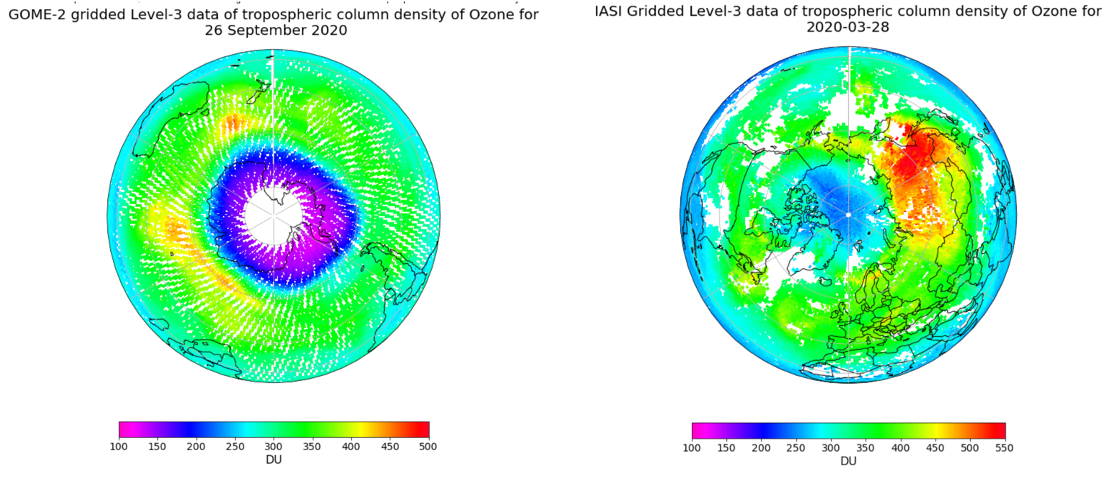Short_course_11: The ozone hole tour
Contorno da seção
-
This short course focuses on the analysis of the Antarctic and Arctic ozone hole in 2020.

The short course consists of two parts:
- 18 February 2021, 12:00 UTC (13:00 CET) | Live webinar including a practical hands-on session
- 23 February 2021, 14:00 UTC (15:00 CET) | Live feedback session - to attend please click here.
The live webinar on 18 February gives you an introduction to the topic and the practical training material and has two parts: (i) first, the basics of stratospheric ozone science and observational techniques will be discussed and (ii) second, a practical hands-on session allows learners to learn more about ozone data from the GOME-2 and IASI instruments aboard Metop-A/B/C, how it can be analysed and animated.
Between the short course and the feedback session, you can work with the data in a self-paced manner. During the feedback session, we will discuss open questions and feedback.You can engage and ask questions via Slido.com: #EUMSC11 or simply click here.
Start familiarising yourself with the data and practical training material ahead of the short course.
with Alessandra Cacciari, Julia Wagemann, Federico Fierli
See the section 'Jupyter-based training platform and practical training material' on how to get access. -
The course has the following outline:
- 12:00 - 12:20: Welcome and Introduction to stratospheric ozone (Federico Fierli, EUMETSAT) - presentation here
- 12:20 - 12:45: GOME-2 Level 2 data (Alessandra Cacciari, EUMETSAT) - you can find the presentation here
- 12:45 - 13:25: The Arctic and Antarctic ozone hole in 2020 - Practical workflows with Jupyter notebooks (Julia Wagemann, MEEO)
- 13:25 - 13:30: Q&A and Wrap-Up (Julia Wagemann, MEEO)
Session recordings
Recording of the webinar on 18 Feb 2021 is available here: -
The course material is made available on a JupyterHub instance, a pre-defined environment that gives learners direct access to the data and Python packages required for following the course.
The Jupyter-based training platform can be accessed as follows:
- Web address: https://training.ltpy.adamplatform.eu
- Create an account here.
- Log into the training platform with your account created.
There are 100 places available, which will be given on a first come first served basis.
------------------------------------------------------------------------------------------------------------------------
To reproduce the course modules on your local setup, the following Python version and Python packages will be required:
- Python version: Python3.8
- Python packages include xarray, netCDF4, numpy, matplotlib, cartopy, cdsapi, ipynb, scikit-image and ffmpeg-python
-
Our training activities support users in the member states and among the World Meteorological Organization (WMO) members in the application of EUMETSAT data, products, and services, including Copernicus data provided by EUMETSAT. Find our more at our web page.
Subscribe to the Training Bulletin the joint EUMETSAT, EUMETCAL, EUMeTrain newsletter on new activities and resources in European meteorological training — published every quarter.
Contact us for questions about training events and professional development opportunities at training@eumetsat.int.
Follow us on Twitter @eumetsat_users.
